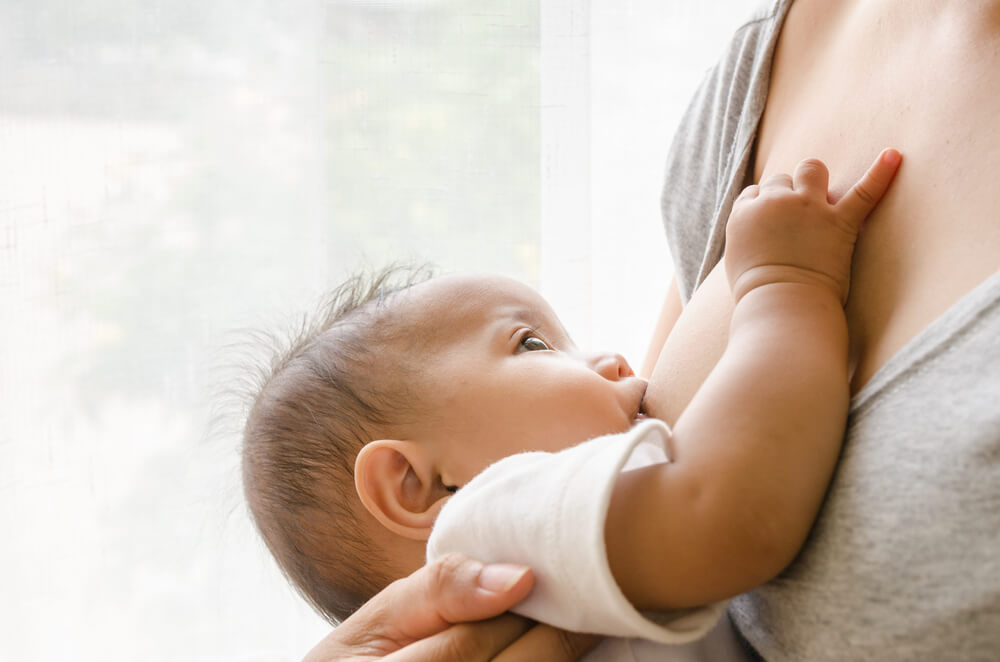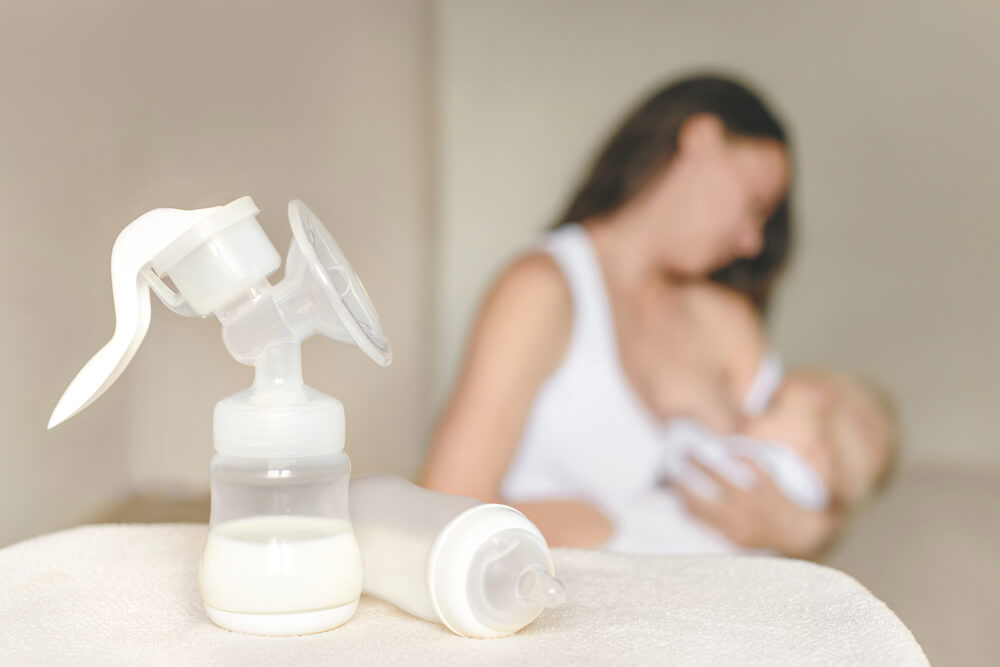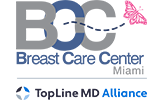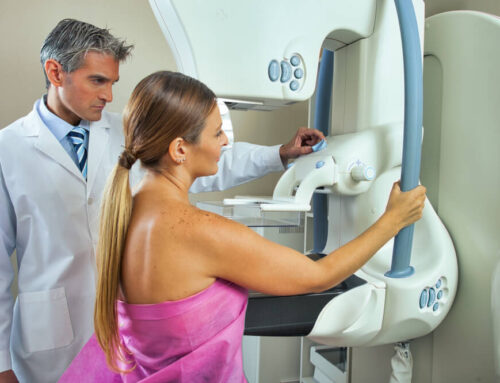During pregnancy and breastfeeding, you’ll notice many changes to your body, particularly around the breast area. Although some of them, like your areolas getting darker and/or bigger, may worry you, especially if this is your first pregnancy, keep in mind that this is all completely normal.
Still, it is necessary to find the time for proper breast care during breastfeeding. While nursing breasts don’t require any special care per se, adequate hygiene and awareness of the ongoing changes will help you feel more comfortable and prevent any infections.
Proper Breast Care During Breastfeeding
There’s no need to drastically change your regular breast care and hygiene. On the other hand, you have to take the condition of your skin into account. It might start cracking if it’s too dry; if it remains wet for too long, it may breed germs. With proper breast care and hygiene, something like that shouldn’t happen, but note any worrying changes that might affect your lactating breasts.
Although it’s entirely normal for nursing breasts to become larger, tingle, and feel tender, or for your breast milk to leak, it’s always better to be safe than sorry. Your doctor won’t mind discussing this with you during your next scheduled visit, so be sure to ask any questions you might have. That said, you’re always welcome to reach out to us at Breast Care Center Miami.

Remember to Change Pads Regularly
Change your breast pads every time they become wet after breastfeeding or milk leaking. Remember, dampness may cause germs to grow, thus potentially leading to infection.
Carefully Choose Your Bra
What kind of bra you are wearing when breastfeeding matters a lot. That’s why you should make an informed decision. We heavily recommend choosing bras made of cotton, as this material will allow your skin to breathe.
Make Sure the Baby Is Latching Correctly
It is essential to teach the baby to latch on correctly from their first breastfeeding. Not only will this make breastfeeding much more comfortable for you, but it’ll also prevent painful problems like sore nipples or mastitis.
Also, make sure to correctly remove the baby from your breast once you’re done breastfeeding. Rapidly pulling them off is a mistake. Instead, place a finger in the corner of their mouth and gently break the suction.
How to Care for Your Breasts When Pumping?
Breast care during breastfeeding also refers to pumping. After all, using a breast pump is essentially no different from regular breastfeeding. Aside from following proper breast care and hygiene rules and changing your breast pads regularly, you should also follow a few simple extra steps.
Choose a Fitting Pump Flange
Even if a standard pump flange seems to be working pretty well for your breast, it doesn’t mean that it’s the right choice for you. To achieve the best results, you need to ensure that the flange fits your breast. Ensure that the flange is appropriately sized and allows correct nipple positioning for your nipple care when breastfeeding. Using one that is simply too small or too big means that the pumping will be far more uncomfortable and can also cause a breast injury.
Always Clean the Equipment
After you’re done pumping, wash your hands and thoroughly clean up the pump. For effective breast and nipple care when breastfeeding, you should always ensure that the pump is completely clean before using it again; otherwise, you’ll be at a bigger risk of infection.
How to Care for Your Breasts When Weaning?
Once you decide that it is time to start giving your baby other kinds of foods, your breasts will still produce breast milk. You can decide if you still want to breastfeed your baby for a while or to stop breastfeeding altogether. If you’re weaning gradually, no particular actions need to be done.
Your breast milk supply will decrease with time as the baby becomes accustomed to other kinds of food. When weaning rapidly, however, you should take some extra care of your lactating breasts. Above all else, make sure to:
- Consult your doctor if you’re in pain; they’ll be able to prescribe you medications like Tylenol or Motrin.
- Do not touch your nipples, as well as the surrounding area, since doing this will cause them to produce more milk
- Place a cold compress on your chest as this will help to reduce swelling and pain you might experience after you stop breastfeeding your child
- Avoid wearing tight bras, as they might cause you severe discomfort
- If you’re experiencing leaks from still lactating breasts, use cotton cloth or breast pads
Avoid pumping milk too often. You can still do this once you’ve stopped breastfeeding if your nursing breasts are painfully full. However, avoid doing this too often, as pumping out too much milk will only stimulate your breasts to produce more.
Following these tips will make the first few weeks after you’ve decided to stop breastfeeding much more comfortable.

The Best Breastfeeding Holds
You will most likely spend large amounts of time breastfeeding your child, especially during the first few weeks of their life. To make it safer for both you and your baby, you need to learn how to hold your child during breastfeeding. Even the baby’s positioning is a part of good breast and nipple care when breastfeeding. There are various breastfeeding holds, so just pick the one you feel most comfortable with.
Cross Cuddle Hold
Begin by placing a pillow on your lap, then place the baby’s head on the said pillow. Support the breast with the hand at its side. Hold your baby with the opposite hand so that your hand rests between the shoulder blades. Place your hand so that it supports the back of the baby’s head.
Side-Lying Hold
Next, lay down your baby beside you so that their head faces your chest. Lie down on your side, and gently support your head with one hand. Place a soft pillow behind the baby for support, and pull the baby in. This method is actually heavily recommended if you’ve gone through a C-section. Other methods may cause the baby to put pressure on your stomach, while this one is much safer.
Football Hold
Hold your baby leveled at the side of the breast you will use to feed it. Your baby’s head should be placed next to your nipple in such a way that you can support its legs with your arm. You can also place a pillow below your arm to support the child’s weight. While feeding, gently hold the base of your baby’s head for more safety and comfort.
Proper breast care during breastfeeding is extremely important. It will help both you and your child stay healthy and prevent infections and other potential issues. Please consider the tips mentioned above and tricks as they will keep you safe and healthy and make the feeding process much more comfortable for your child. You can always count on Breast Care Center Miami experts if you have any questions or concerns about breastfeeding, breast, and nipple care during this period and the best techniques for you and your child.






